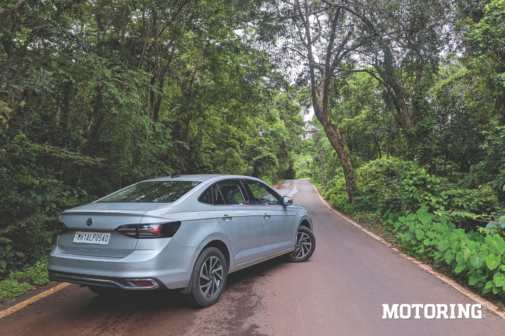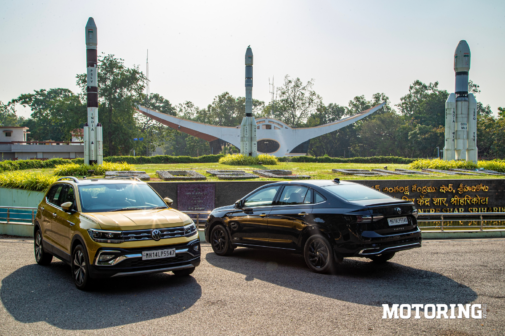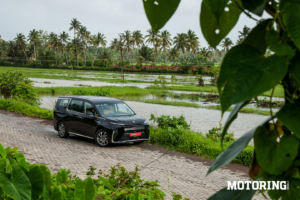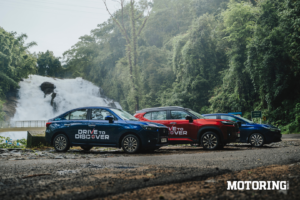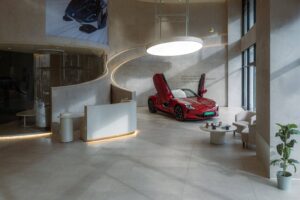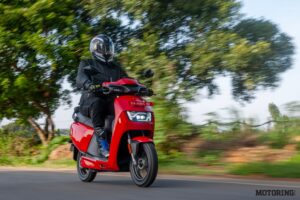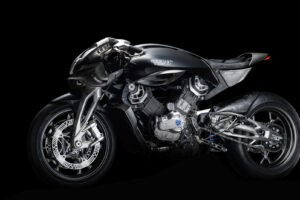Photos by S Shubham
As much as I dislike the stereotypes that come with it, petrolheads are a disappearing breed. Big engines are now a part of the folk-lore, and it is hard to be excited by a 1-litre three-pot which delivers exceptional fuel economy. I mean, yes It could be fun in a golf cart but not in a mid-size SUV. This gradual de-sizing, not just of engines, but the love of cars has been a long time coming, making the time ripe for electric vehicles. Sure, they have been around a long time too now, but now concepts are becoming reality sooner. Almost every manufacturer has an EV ready or is making one, and some of them are good. Since this is the Tech Special, I am going all in for the planet and completely believe EVs are the way forward. Unlike the average Motoring reader, I will also believe that a vehicle is only the means for getting from point A to B. Let’s be bold and add that efficiency and price are more significant than driving pleasure.
The choice of the MG Comet and TVS iQube for this issue special was not random. Miles of scrolling pages have told you the factors affecting EV adoption. With cars, range anxiety is probably a bigger concern whereas electric 2Ws, well, not catching fire must be pretty high up. Both these machines have their strong and weak points, naturally, but they have some common things too – apart from a motor and 12-inch wheels. Both are legacy brands and yet have stayed relevant through their products. Most won’t remember what MG went through before SAIC, but it has been pushing the envelope since then. Like I wrote when I drove the Comet for the first time, it is pretty gutsy to launch a car like this in India, which is in love with SUVs. TVS on the other hand has been on a roll, and if they were caught off-guard by the start-up brigade, the iQube crossing the 250,000 sales mark is a resounding response.
The most obvious thing which is not common to both of them is their approach to design. The Comet wants to, and does almost everywhere, stand out. The iQube wants to blend in. Every time I see the Comet, I am reminded of the driverless car in Silicon Valley. A compact, not small, electric car whizzing away has something cute about it. Ok, cute may be a stretch but eye-catching for sure. It is not just the size that catches the eye, but also its neat blend of modernity and a bit of fun like this Apple Green colour, especially in Delhi’s grey winter. The TVS iQube, in contrast, is like that cousin in the family who’s always calm and collected. It’s got this clean, modern look, but it’s also classic in a way. A breath of fresh air in a sea of robot-looking EVs. The iQube quietly asserts its presence, confidently but in an understated manner.
Surprisingly, small is not the word that comes to mind when stepping into the Comet. Inspired by a certain California company, not Tesla, the interiors are surprisingly upscale, devoid of cheap plastics and rough edges. The cabin feels well put together, and there is attention to detail even though it may appear gimmicky to some. The steering wheel reminds me of a gadget with its white buttons and blocks the display in my driving position. There are two 10.25-inch screens, which make up almost all of the dashboard and the interface is sharp and intuitive. There are manual controls for the air-con and the rotary gear selector, but it’s the little things which leave you wanting. Like, a glovebox a regular size holder or a driver’s armrest. Thanks to its tall roof and floor, there is decent space in the Comet. I did drive around with four full-sized adults and short drives are not a problem. Features like ABS, twin airbags, and Tyre Pressure Monitoring System will give some peace of mind to drivers bothered by not having a bonnet.
The iQube doesn’t hold back when it comes to tech and features either. There are a lot of LEDs all around, one even under the seat and there is a USB charging slot too. The real star of the show for me was the iQube’s TFT display, which comes with Bluetooth connectivity, and crisp and sun-friendly graphics. There is an iQube app which tells you everything you want to know, including where your scooter is and past trip data. The app also brings call and SMS alerts, along with navigation to your handlebars. Park Assist is a cool feature too, although I found the iQube to be quite easily manoeuverable.
Let’s talk about some different numbers now, which aren’t the strong points of either of these two. The iQube’s hub-mounted electric motor delivers a peak power output of 4.4 kW, with a top speed of 78 km/h (although Aaradhya claims it is higher) and it is advisable to choose the Power mode if you want any speed. The range will drop, but I’d rather spend two hours charging than crawling at below-speed-limit speeds. The 12-inch wheels, telescopic front forks and front forks make the ride comfortable. Some clever stuff by TVS, splitting the battery into three parts, with one under the footboard, gives the iQube a more balanced weight distribution and addresses the common complaint on hub-mounted motor setups.
The Comet, with its 40.7hp motor, makes less power than the Duke 390, but somehow it seems enough for the car. Well, the old me wouldn’t mind some more but since we are saving the planet, it seems enough for the car. The small 12-inch wheels do not like fast corners, they want to save the world at a relaxed pace. At high double-digit speeds, the steering requires some correction but you get used to it like you get used to the regen. Thanks to the light weight you can drive short stretches completely on one pedal. Both the Comet and iQube are city machines and when driven sedately, they get the job done. Do not come looking for those pushed-back-in-your-seat EV vibes here.
The Comet and the iQube are very different personas but I think they solve some real concerns for first-time EV buyers. The range on the Comet is inversely proportional to the odometer, I checked it every day I drove, and that does make planning your city run easier. The iQube is a solid, reliable scooter which offers you modern tech with the comfort of the old. Neither will set your heart racing, unfortunately. But then, we are all in for saving the planet today. So if you want to dip your toes in the two-wheeled or four-wheeled EV world, the Comet and the iQube might be a good place to start.









